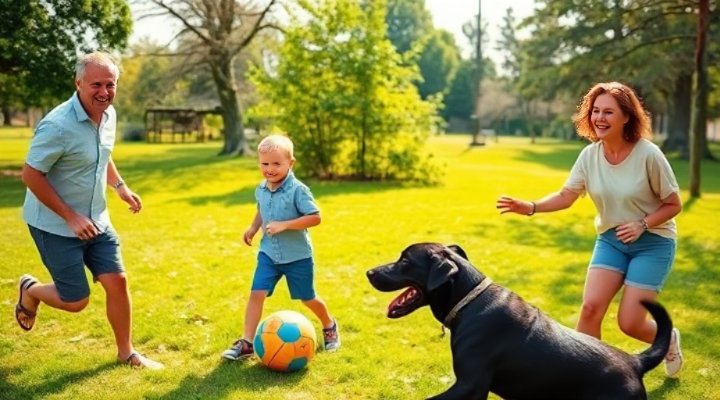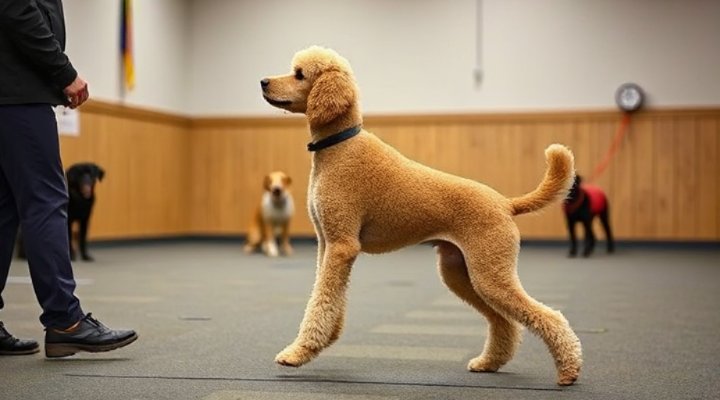Dog obedience training is more than just teaching your pet to sit or stay – it’s about building a language of communication between you and your furry companion. Through consistent training, you’ll notice remarkable changes in your dog’s behavior, making everyday life more enjoyable for both of you.

The Foundations of Effective Dog Obedience Training
Before diving into specific commands, it’s crucial to understand the core principles of successful dog obedience training. Positive reinforcement is the golden rule – rewarding good behavior rather than punishing mistakes. This approach not only works faster but also strengthens your bond with your pet. For instance, when I trained my own rescue dog, Max, using treats and praise made him eager to learn, while harsh corrections only made him anxious.
Consistency is another vital element. Dogs thrive on routine and clear expectations. If you allow jumping on Monday but scold for it on Tuesday, your dog will only become confused. Establish house rules and ensure all family members enforce them uniformly. Our article on Basic Obedience For Young Pets offers excellent tips for maintaining consistency.

Essential Commands Every Dog Should Know
1. The Life-Saving ‘Come’ Command
Teaching a reliable recall could literally save your dog’s life one day. Start in a distraction-free environment, using high-value treats and enthusiastic praise when your dog responds. Gradually increase the difficulty by adding distance and distractions. Remember, never punish your dog when they finally come to you, even if it took them a while – this will only teach them that coming when called leads to bad things.
2. The Polite ‘Sit’ Command
A simple ‘sit’ is incredibly versatile – it prevents jumping on guests, helps with calm greetings, and serves as a default behavior when your dog isn’t sure what to do. For stubborn breeds like Huskies (which we cover in our How to Train a Stubborn Husky guide), you might need extra patience and creativity with this one.

3. The Patient ‘Stay’ Command
Teaching ‘stay’ builds impulse control, which is essential for well-mannered dogs. Start with short durations and minimal distance, then gradually increase both. This command is particularly useful when answering the door or preparing your dog’s food.
Advanced Obedience Training for Real-World Situations
Once your dog masters basic commands, you can progress to more advanced obedience training that prepares them for real-world challenges. Our Advanced Dog Obedience Techniques guide dives deeper into this topic.
One crucial skill is loose-leash walking. Unlike constant pulling, which can make walks stressful, proper leash manners turn your daily strolls into enjoyable bonding time. Start in quiet areas and reward your dog for staying by your side. Gradually introduce more challenging environments.

Overcoming Common Training Challenges
Every dog owner faces obstacles during obedience training. Distractions, stubbornness, or even fear can hinder progress. The key is to identify the root cause and adjust your approach accordingly. For anxious dogs, our Reducing Pet Anxiety article offers helpful strategies.
If you’re struggling, don’t hesitate to seek professional help. A good trainer can assess your specific situation and provide tailored solutions. Many local dog training classes offer group or private sessions that can address your needs.

The Lifelong Benefits of Dog Obedience Training
The transformation that occurs through consistent dog obedience training extends far beyond basic commands. A well-trained dog is safer, happier, and more confident. They can accompany you more places, interact better with other dogs and people, and generally enjoy a higher quality of life.
Moreover, the training process itself strengthens your bond in remarkable ways. As you communicate effectively and work together toward common goals, you’ll develop a deeper understanding and appreciation for each other. That’s the true magic of obedience training – it doesn’t just create a well-behaved pet, but a cherished family member who understands and respects household rules.
Remember, every dog learns at their own pace. Celebrate small victories and be patient with setbacks. With time, consistency, and positive reinforcement, your dog will blossom into that well-behaved companion you’ve always wanted.
Related Keywords: puppy obedience training, dog behavior training, professional dog training, positive reinforcement training, canine obedience classes, dog training techniques, well-mannered dog training

